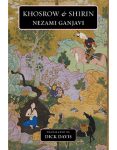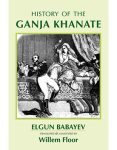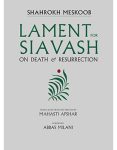About the Book
The renowned Russian Iranist Ilya Pavlovich Petrushevsky devoted his career to the study of agriculture and feudal relations in Iran. In this book he analyzes them, giving particular attention to Azerbaijan and Armenia from 1500 to 1900.
Petrushevsky first examines Iran’s feudal class and its organization, and points out that Safavid Iran was not a national state, as others have argued. This is followed by a study of the specific institutions related to feudal landownership, to wit: soyurghal and mo`afi; tiyul; and molk. He gives special attention to the terminology of social relations, because it is complex and variable across different regions and periods. Furthermore, he studies the productive forces in the agricultural sector of the feudal peasantry, and the question of whether peasants were tied to the soil or not. Finally, he investigates, in great detail, how peasants reacted to their oppression.
Feudal Relations in Iran Azerbaijan and Armenia,1500-1900, translated from the Russian for the first time by the eminent scholar and historian Willem Floor, is a major contribution to our understanding of the socio-economic and political development of Iran. It is a must read for all those interested in the history of Iran and the Caucuses during this period.
———————————–
Contents/Excerpt
Translator’s Preface, v
Preface, 1
Chapter 1Sources and Scholarly Development of the Problem, 5.
Documentary sources: Shah’s decrees, Khan’s decrees of the Transcaucasus. XIX century archives. Epigraphy. Overview of Persian-language narrative sources from the 16th to the early 19th centuries. Persian-language sources from the preceding period. Azerbaijani sources. Armenian sources. Western European travelers. Russian sources. Development of the problem by pre-revolutionary historians, Local bourgeois nationalist schools. Research by Soviet scholars. Works by I. V. Stalin and the development of the problem.
Chapter II. Specifics and Periodization of Feudal Development in Azerbaijan and Caucasian Armenia
in the 16th to the early 19th century, 75
Formulation of the problem. Sefewids and Qizilbash in the 15th century. Characteristics of the Qizilbash state in the 16th century. Features of feudalism in Azerbaijan and Caucasian Armenia in the 16th century. Types of land ownership. Evolution of the Qizilbash state at the turn of the 16th and 17th centuries. Feudal development in Azerbaijan and Armenia in the 17th century. Causes of economic decline at the turn of the 17th and 18th centuries. Growth of feudal exploitation. Azerbaijan and Armenia in the first half of the 18th century. The period of semi-independent Khanates (1747-1828), its characteristics. Scheme of periodization of feudal development in Azerbaijan and Armenia in the 16th to the early 19th century.
Chapter III.The Feudal Class and Its Organization, 107
Four groups of the feudal class. Qizilbash tribes. Organization of nomadic tribes. Military-nomadic nobility. Emirs and rishsefid of the ulka (ölke) and qoshun. The districts of Khoy and Salmas – the Dumbuli tribe’s ulka. Analysis of the lists of emirs from 1576 and 1628. Reforms of Shah Abbas I and the nomadic nobility. Muslim Shiite clergy. Christian (Armenian) monasteries as landowners. Descendants of the ancient local settled nobility (meliks). Civil bureaucracy. Nukers and mulazims. Examples of large feudal landownership. Administrative division of Azerbaijan and Armenia. Beglerbegs. Hereditary positions. Qajar emirs – hereditary beglerbegs of Karabagh. Beglerbegs and the administrative reform of Shah Abbas I. Hereditary ulka (ölke) in the provinces of Azerbaijan (south), Karabagh, Shirvan, and Chuhur Sa’d (Caucasian Armenia) in the 16th-17th centuries. Ulka (ölke) in Azerbaijan and Caucasian Armenia, their income and levies in the early 18th century.
Chapter IV.Soyurghal and Mu`afi, 175
The origins of the institution of soyurghal. Soyurghal in the 15th century. The soyurghal charter of Qara Yusuf of the Black Sheep 820 AH – 1417 CE, addressed to the ruler of Akhlat, Mush, and Khnus, Emir Shams ad-Din Ruzeki. Analysis thereof. Soyurghal as a continuation and development of the iqta` institution. The soyurghal institution implies not only tax but also judicial-administrative immunity. Reduction in the prevalence of soyurghal under the Sefewids. Soyurghal of the Sheikhs of the Zahidi family. The soyurghal charter of Shah Husayn 1113 AH – 1701 CE, addressed to Bayandur Sultan of Karadagh. Soyurghals of the Bibi-Heybat Sheikhs. Features of the soyurghal in the 17th century. Mu`afi. Tax immunities of cities.
Chapter V. Tiyul, 225
The first known mention of tiyul. Tiyul and iqta`. Tiyul as a return to the early form of iqta`. Tiyul in the 16th century, its various types. Two types of tiyul in the 17th century: hame sale and proper tiyul. Tankha. The connection of hame sale with the exploitation of peasants through the state apparatus. The system of assignations. Examples of the income of hame sale holders. Tiyul in the proper sense of the word in the 17th century; two types of it. Expansion of tiyuldars’ rights in the 17th century. Features of the tiyul in Caucasian Armenia. Tiyul and Ulka. General figures of tiyuldars’ income in the early 18th century. General characteristics of tiyul. Changes in the nature of tiyul during the period of semi-independent Khanates. Tiyul allowances of the Quba Khans. The tendency to transform tiyul into hereditary conditional ownership in the second half of the 18th century.
Chapter VI. Mulk (mülk), 273
Critique of the pre-revolutionary Caucasian scholars’ views on the institution of mulk in Armenia and Azerbaijan. Concepts of mulk in Islamic law. Mulk as a feudal institution before the 16th century. Common characteristics of mulk: unconditional ownership with the right to sell and inherit. Mulk in the 16th-17th centuries; different types of mulk. Mulk estates of the Etchmiadzin Monastery. The nature of the sale of mulk estates, “Mulk-i khass” – “pure mulk.” Features of mulk in Caucasian Armenia (Erevan region). Mulk – ownership of water. Mulk as rent – a tax. The illegal acquisition of mulk through the seizure of communal lands by feudal lords. The formation of mulks through communities commending their lands to feudal lords. An example of a commendation charter and its analysis.
Chapter VII. The Situation of Feudally Dependent Peasants, 305
The term “ra`iyat.” Ra`iyats and ilats. The problem of peasants’ attachment to the land and the prohibition of the right to move in Armenia and Azerbaijan until the 16th century. Information from sources about the prohibition of the right to move in the 17th to the early 18th century. Data from sources about the prohibition of the right to move during the period of semi-independent Khanates. The existence of the same taxes and obligations for ra`iyats living on lands of different categories of feudal ownership. A general list of taxes and duties of the ra`iyats. Analysis of the terms and nature of different types of taxes and obligations: mal u jihat (kharaj, bahre) and other military levies; taxes and contributions in kind for the support of the army and the state apparatus; compulsory “relationships” and “gifts”; head and poll taxes; obligations in labor; the institution of bigar in Azerbaijan and Armenia; military service in feudal militias; hunting parties and the participation of peasants in them. Forced recruitment of young men and the eunuch corps of gholams and concubines in the Shah’s harem. The practice of collecting taxes through the state apparatus in Armenia and Azerbaijan. Characteristics of the life of Armenian and Azerbaijani peasants in the 17th to the early 18th century. Duties and life of ra`iyats in the semi-independent Khanates. Categories of ra`iyats: communal peasants, sharecroppers, nomadic ilats, and their obligations. Reasons for the slow process of sedentarization of nomads. Mu`afis (ma`afis). The beg’s nukers and gholams. The institution of ranjbars – a feature of the feudal system in Azerbaijan during the period of semi-independent Khanates. The general character of ranjbari. Other forms of personal dependency. Forms of class struggle. Peasant uprising in Shirvan in 1537. Peasant uprisings in the second half of the 16th century. The Jelaliye movement. The movement of Mehlubaba. Movements in the second half of the 16th century. Peasant uprisings in the first half of the 18th century. Peasant uprisings in the first half of the 18th century.
Bibliography, 415
List of abbreviations, 435
About the Author and the Translator, 439
Index, 441








